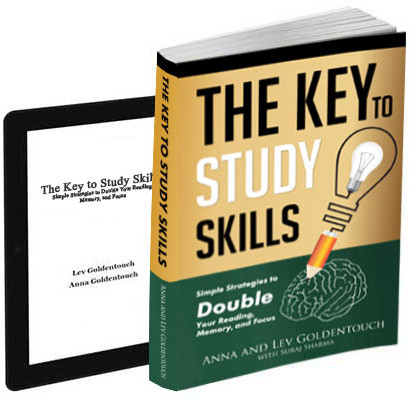Nursing students often face the daunting task of memorizing vast amounts of information, from anatomy and physiology to complex pharmacology and medical procedures. One effective strategy to make this process easier and more efficient is the use of mnemonics. Mnemonics are memory aids that use patterns, such as letters, words, or associations, to help remember information. By transforming complex information into simple, easy-to-recall phrases or concepts, mnemonics can significantly enhance your study sessions. In this article, we will explore ten powerful nursing mnemonics that can save your study sessions and help you excel in your nursing program.
1. SAMPLE History
Taking a patient’s history is a crucial skill for nurses. The SAMPLE mnemonic helps remember the essential components of a patient’s history.
- S: Signs and Symptoms
- A: Allergies
- M: Medications
- P: Past medical history
- L: Last meal or oral intake
- E: Events leading to the present illness
Application in Practice
- Signs and Symptoms: Assess the main complaints and symptoms the patient is experiencing.
- Allergies: Identify any known allergies to medications, foods, or environmental factors.
- Medications: Review the current medications the patient is taking, including dosages and schedules.
- Past Medical History: Gather information on the patient’s medical history, including chronic conditions and previous surgeries.
- Last Meal or Oral Intake: Determine when the patient last ate or drank, which can be crucial for certain medical procedures.
- Events Leading to Present Illness: Understand the sequence of events that led to the current medical issue.
2. ABCDE for Assessing Melanoma
Skin cancer is a critical concern in healthcare, and nurses need to be proficient in identifying potential melanomas. The ABCDE mnemonic helps in assessing moles and skin lesions.
- A: Asymmetry
- B: Border irregularity
- C: Color variation
- D: Diameter greater than 6 mm
- E: Evolution or change over time
Application in Practice
- Asymmetry: Examine if one half of the mole or lesion does not match the other half.
- Border Irregularity: Check for edges that are ragged, notched, or blurred.
- Color Variation: Look for uneven coloring with multiple shades of brown, black, or other colors.
- Diameter: Measure the lesion to see if it is larger than 6 millimeters, roughly the size of a pencil eraser.
- Evolution: Monitor any changes in size, shape, color, or symptoms like itching or bleeding.
3. MONA for Treating Myocardial Infarction
When treating a patient with a suspected myocardial infarction (heart attack), the MONA mnemonic helps remember the initial treatment steps.
- M: Morphine
- O: Oxygen
- N: Nitroglycerin
- A: Aspirin
Application in Practice
- Morphine: Administer to alleviate chest pain and reduce myocardial oxygen demand.
- Oxygen: Provide supplemental oxygen to improve oxygenation of the heart muscle.
- Nitroglycerin: Use to dilate blood vessels and reduce cardiac workload.
- Aspirin: Administer to prevent further clot formation by inhibiting platelet aggregation.
4. DRUGS for Safe Medication Administration
Ensuring safe medication administration is a fundamental responsibility for nurses. The DRUGS mnemonic helps remember key considerations.
- D: Dose
- R: Route
- U: Understanding the medication
- G: Giving the right patient the right drug
- S: Storage and handling
Application in Practice
- Dose: Verify the correct dosage as prescribed.
- Route: Ensure the medication is administered via the correct route (oral, IV, IM, etc.).
- Understanding the Medication: Be knowledgeable about the medication’s purpose, side effects, and interactions.
- Giving the Right Patient the Right Drug: Follow proper patient identification protocols to prevent errors.
- Storage and Handling: Store medications properly and handle them according to guidelines to maintain efficacy and safety.
5. OLDCART for Pain Assessment
Effective pain assessment is crucial for providing appropriate care. The OLDCART mnemonic aids in a comprehensive pain assessment.
- O: Onset
- L: Location
- D: Duration
- C: Characteristics
- A: Aggravating factors
- R: Relieving factors
- T: Treatment
Application in Practice
- Onset: Determine when the pain started.
- Location: Identify the exact location of the pain.
- Duration: Assess how long the pain has been present.
- Characteristics: Describe the pain (sharp, dull, throbbing, etc.).
- Aggravating Factors: Identify what makes the pain worse.
- Relieving Factors: Find out what alleviates the pain.
- Treatment: Review any treatments that have been tried and their effectiveness.
6. RACE for Fire Safety
Fire safety is paramount in any healthcare setting. The RACE mnemonic provides a quick guide for responding to a fire emergency.
- R: Rescue
- A: Alarm
- C: Contain
- E: Extinguish or Evacuate
Application in Practice
- Rescue: Remove patients and staff from immediate danger.
- Alarm: Activate the fire alarm system to alert others.
- Contain: Close doors and windows to prevent the spread of fire and smoke.
- Extinguish or Evacuate: Use a fire extinguisher to put out the fire if safe to do so, or evacuate the area if the fire is too large.
7. SOAPIER for Documentation
Accurate and thorough documentation is essential in nursing. The SOAPIER mnemonic helps structure patient documentation effectively.
- S: Subjective
- O: Objective
- A: Assessment
- P: Plan
- I: Intervention
- E: Evaluation
- R: Revision
Application in Practice
- Subjective: Record the patient’s statements and symptoms.
- Objective: Document observable and measurable data, such as vital signs and physical exam findings.
- Assessment: Provide an analysis or diagnosis based on the subjective and objective data.
- Plan: Outline the planned course of action, including treatments and interventions.
- Intervention: Describe the interventions that were actually implemented.
- Evaluation: Assess the effectiveness of the interventions.
- Revision: Update the care plan as necessary based on the evaluation.
8. PQRST for Pain Assessment
Another effective mnemonic for pain assessment is PQRST, which helps gather comprehensive pain information.
- P: Provocation/Palliation
- Q: Quality/Quantity
- R: Region/Radiation
- S: Severity Scale
- T: Timing
Application in Practice
- Provocation/Palliation: Identify what provokes the pain and what alleviates it.
- Quality/Quantity: Describe the nature and intensity of the pain.
- Region/Radiation: Determine the location of the pain and whether it radiates to other areas.
- Severity Scale: Use a pain scale (e.g., 0-10) to quantify the pain.
- Timing: Assess when the pain occurs (constant, intermittent, etc.) and its duration.
9. APGAR Score for Newborns
The APGAR score is a quick method to assess the health of newborns immediately after birth. The APGAR mnemonic helps remember the criteria.
- A: Appearance (skin color)
- P: Pulse (heart rate)
- G: Grimace response (reflexes)
- A: Activity (muscle tone)
- R: Respiration (breathing rate and effort)
Application in Practice
- Appearance: Assess the skin color, noting any cyanosis or pallor.
- Pulse: Measure the heart rate, with a normal range being 100-140 beats per minute.
- Grimace Response: Check the baby’s response to stimulation, such as a mild pinch.
- Activity: Evaluate muscle tone, looking for active movement.
- Respiration: Observe the breathing pattern, ensuring it is regular and strong.
10. FAST for Stroke Recognition
Quick recognition of stroke symptoms is crucial for timely treatment. The FAST mnemonic aids in identifying and responding to stroke symptoms.
- F: Face drooping
- A: Arm weakness
- S: Speech difficulties
- T: Time to call emergency services
Application in Practice
- Face Drooping: Ask the person to smile and check if one side of the face droops.
- Arm Weakness: Ask the person to raise both arms and see if one arm drifts downward.
- Speech Difficulties: Listen for slurred speech or difficulty speaking.
- Time to Call Emergency Services: If any of these signs are present, call emergency services immediately.
Conclusion
Nursing mnemonics are invaluable tools that can simplify the learning process and enhance memory retention. By incorporating these ten powerful mnemonics into your study sessions, you can streamline your memorization of critical information, improve your clinical skills, and ultimately provide better patient care. Whether you are assessing pain, documenting patient information, or responding to emergencies, these mnemonics will serve as quick references to ensure you remember essential details accurately and efficiently.

Get 4 Free Sample Chapters of the Key To Study Book
Get access to advanced training, and a selection of free apps to train your reading speed and visual memory
